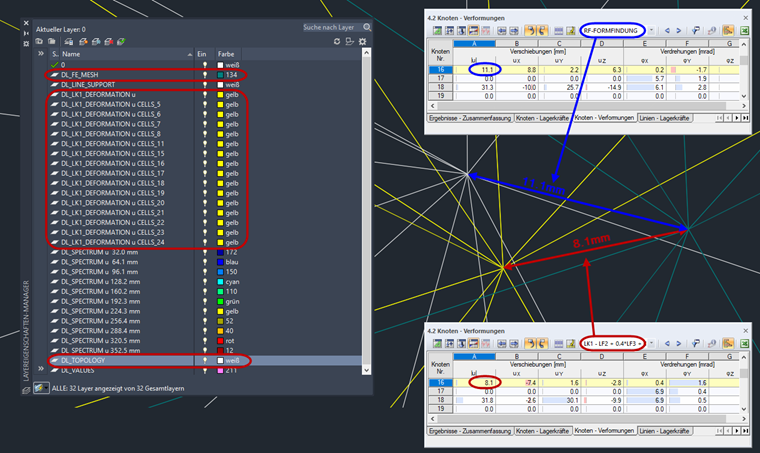The deformations of load cases and load combinations always refer to the deformed form-finding shape and thus to the shifted FE mesh. In this case, the result is saved in the "DL_LK_DEFORMATION u" layers. The "DL_FE_MESH" layer shows the result of the form-finding. The initial structure is located in the "DL_TOPOLOGY" layer.
If the DXF file was generated with the "Form-Finding" load case active (see Image 02), that is, not via a load case or load combination, the deformation for the initial structure can be found in the "DL_FE_MESH" layer. However, this only applies to surfaces. The deformations of the "DL_LK_DEFORMATION u" layers are not important in this case, and should be hidden.
If the structure consists solely of members/cables, no shape can be exported via the active "Form-finding" load case. Currently, this only works for surfaces. In order to export the found shape of the members anyway, please create an empty load case, calculate it, then export the results of this load case. The shape can then be found in the "DL_LF_DEFORMATION u" layer.
Basically, the display factor should be set to "1" when exporting the deformed structure (see Image 03). Defining a larger or smaller factor also affects the result in the DXF file.


